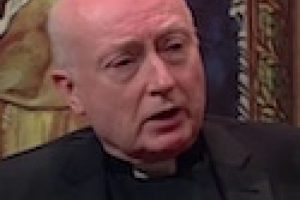Column: From the Pastor
Nostalgia is a selective editing of the past. For instance, there are those who wish we had today some of the architects of thirteenth-century cathedrals, but who avoid mentioning thirteenth-century dentists. In recent times, the general conceit has been the opposite of nostalgia. The philosopher Owen Barfield spoke of “chronological snobbery,” defined as the belief that “intellectually, humanity languished for countless generations in the most childish errors on all sorts of crucial subjects, until it was redeemed by some scientific dictum of the last century.”
That snobbery had its heyday in the past generation, which defined itself as mankind finally “come of age.” Were that true, we should now be in the stage of incipient senility. Catholics are suffering from that period’s destructive arrogance. Just look at the circular churches and ugly music that replaced venerable shrines and chants. Characteristic of that polyester period was the underestimation of evil, which Pope Benedict XVI noticed even in some assertions of the Second Vatican Council. Without explanation, the Prayer to Saint Michael was dropped from the liturgical books in 1964. But “Satan and all the evil spirits” have not politely gone away.
That prayer was promulgated by Pope Leo XIII in 1884. Accounts variously claim that he was inspired by a vision of horrors to come in the twentieth century. Its use remained a private option after recitation of the prayer was dropped from the end of Mass, but in 1994 Pope Saint John Paul II, from his experience of travails in his native Poland, was not inclined to underestimate the power of the wickedness and snares of the devil: “I invite everyone not to forget it, but to recite it to obtain help in the battle against the forces of darkness and against the spirit of this world.”
Far from having “come of age,” chronological snobs have learned the hard way that theirs has been a prolonged adolescence. In our present cultural chaos, faced with moral decadence all around, the pope and bishops have asked that the Prayer to Saint Michael be restored at the conclusion of each Mass. In our parish we have not had to reinstate it because we never ceased to offer that prayer after Mass, sometimes to the consternation of a few who thought it retrograde. When the Barque of Peter is tossed by storms, it is time to bring the life jackets out of the storage where some liturgists hid them.
Our church is providentially dedicated to Saint Michael, and a month ago the Catholic News Service published a photograph of our own statue of him, based on the famous painting by Guido Reni. Generations ago, the people of “Hell’s Kitchen” knew that Michael and his sword would be a better defense in battle than liturgical dancers and the balloons of chronological snobs. They also knew, as Baudelaire said, that “The devil’s greatest trick is to persuade us that he does not exist.”
—————
Fr. George Rutler, S.T.D., is a brilliant scholar, author, convert, former pastor of Our Saviour in Midtown Manhattan, now pastor of St Michael’s parish in Hell’s Kitchen, New York City. A donation of any amount may be made to the parish at: www.StMichaelNYC.com.
View Articles Father Rutler was ordained to the diaconate in Rome by His Eminence William Cardinal Baum in 1980 and received priestly ordination in St. Patrick's... MORE »



You must be logged in to post a comment.